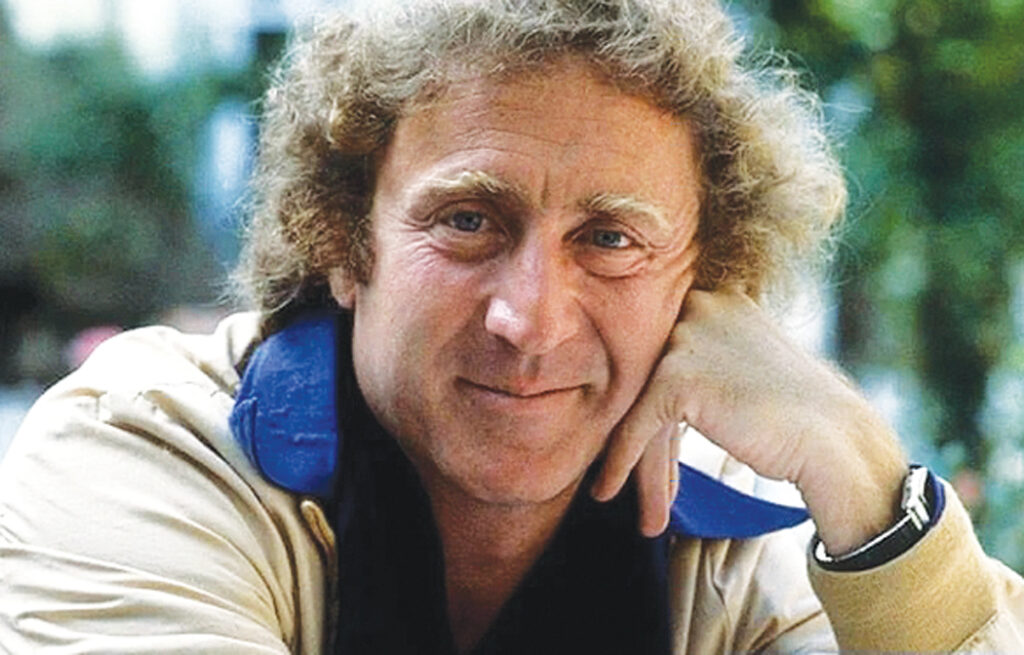
“If I hadn’t met Mel Brooks, I would probably be a patient in some neuropsychiatric hospital looking through the bars of a physical therapy window as I made wallets.”
—Jerome Silberman, a.k.a. Gene Wilder
Attention Gene Wilder fans. A warm and finely tuned documentary draws us into the personal and professional life of one of show business’s most beloved comedic actors. Wilder’s career proved him to be a multitalented presence on stage, screen, and television, as well as a writer and director, along with having natural talents for singing and dancing. Most of all, Wilder is a launching pad for laughter, immortalized for his roles in the absurdly hysterical film comedies directed by friend and collaborator Mel Brooks, including The Producers, Blazing Saddles, and Young Frankenstein. Narrated in part by the man himself, who died in 2016 at age 83, these engaging 92 minutes offer inspiration, entertainment, and a worthy remembrance of Gene Wilder.
Jerome (Jerry) Silberman was born in 1933 in Milwaukee, Wisconsin, later changing his name for his need to be “wilder.” His comedic tendencies emerged at the age of eight when his mother suffered her first heart attack. Her doctor whispered instructions to Jerry that could shake an adult, never mind a child. He told him never to argue with his mother because it might kill her. Just try to make her laugh. The young Wilder was terrified into obeying both instructions. His reward was a comedy career. But the tragic fallout was his fear of confrontation, of arguing with anyone, which locked him in a state of perpetual panic.

That was offstage. Then came his acting career. Wilder’s characters expressed fits of hyper excitement or anger. His restraint was a powder keg of hysteria that needed to explode, which Mel Brooks fondly compared to a volcano. Personally, I found those exaggerated reactions overwhelming. But Wilder recognized that performing was his therapy, an artificial situation in which he was allowed to breathe and let go, without killing anybody. As he explains, “Being on stage saved me from myself.”
Drawing inspiration from comedians of the day, young Wilder mimicked the styles of Danny Kaye, Jerry Lewis, or Sid Caesar to make his mother laugh. And she did. Later, when he became a performer, her appreciation gave him confidence. As he started getting movie roles, his delivery seasoned the characters with gentle humor that the directors were not expecting. And the fact that they weren’t complaining was a nod to Gene’s talent.
The big honchos who were hesitant about Wilder were the film producers. The money guys. They wanted a bigger star. But Wilder’s role was safe with Mel Brooks in the director’s chair. Brooks appeased the opposition by playing the yes man. He agreed to replace Wilder with a better-known actor who was more “this” or less “that,” while having no such intention. And sure enough, by the time Brooks completed production, his film got the green light.
Remembering Gene Wilder includes many of Wilder’s friends, co-stars, and collaborators, like Harry Connick Jr., Richard Pryor, Teri Garr, Madeline Kahn, Peter Boyle, Marty Feldman, Cloris Leachman, Ben Mankiewicz (host of Turner Classic Movies), and especially Wilder’s director, collaborator, and friend, Mel Brooks. It also includes his personal connections, like Gilda Radner, his third wife, who sadly died of cancer five years after they married.
In addition to understanding what made Gene Wilder tick, the documentary visits some of his best movie scenes. Blazing Saddles is a silly, witty, and daring comedy about racism in the Wild West that Mel Brooks dared to tackle with a team of four other writers. Saddles is also a showcase for Wilder’s gift for dialogue. As the Waco Kid, Wilder gently explains to the new sheriff, who is black, why the town is so unwelcoming. Wilder’s compassionate delivery of unexpected logic is a showstopper you won’t forget.
In Young Frankenstein, a smooth and comical song-and-dance routine of “Puttin’ On the Ritz” features Wilder partnering with the monster, played by Peter Boyle. These moments reveal Wilder’s talents for any occasion. He could sing, dance, act, and make us laugh, sometimes all at once. In this scene, formally dressed and holding a cane, he is one smooth dancer, like he was born for this moment.
Finally, we acknowledge the magical synchrony between Gene Wilder and Mel Brooks. Their successful collaborations fueled a wealth of crazy ideas that became movies. The key to their steady forward motion was their mutual respect, which allowed space for two points of view that could always find resolution. If only we could all get along like that, don’t get me started. Just remember, Remembering Gene Wilder awaits you on Netflix.
